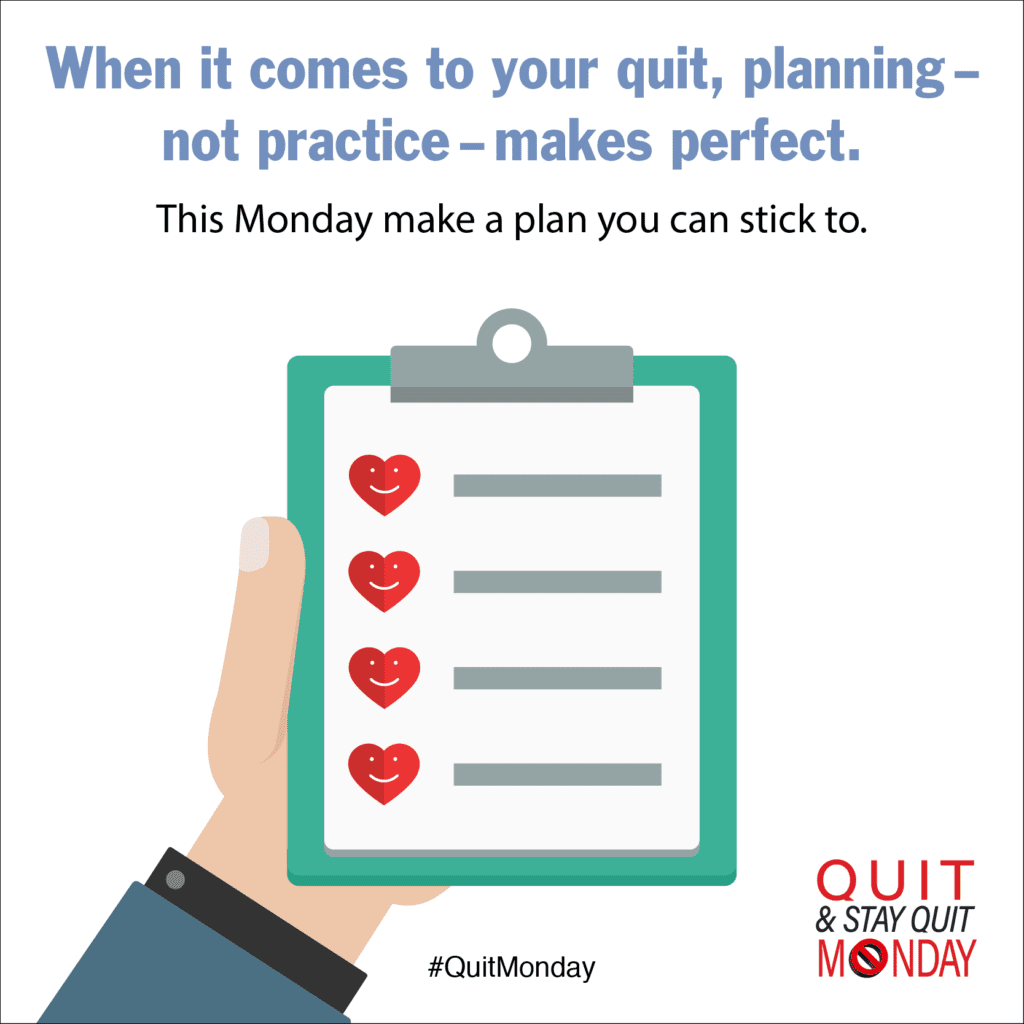Keep Your Quit with Proper Planning
When it comes to your quit, planning—not practice—makes perfect. A quit plan prepares you for obstacles and challenges, but it also serves as a record of past successes and problematic areas. By writing down a quit plan, you’ll know what to expect over the course of your quit journey and learn how to handle problem situations and slip-ups.
So where do you begin?
A quit plan doesn’t have to be rigid and demanding; you can customize your own quit plan in no-time using a five-step approach.
Set a Quit Date
Sounds easy enough, but setting a formal quit date—and marking it on your calendar—adds a heightened degree of commitment and accountability to your quit, making you more likely to follow through and stick with it.
Write Down Reasons for Quitting
There’s a multitude of reasons for why you should quit smoking: your health, your family, your pets, your savings account…And although you know the reasons for why you’re quitting, putting them down on paper makes them more real and tangible. Make these reasons a part of your quit plan, and write them down on a sticky-note that you can paste on your wall, car, or computer monitor to remind yourself of the reasons you’re quitting.
Know Your Triggers
Particular settings, feelings, or events may trigger the urge to smoke. Triggers can be emotional, situational, or social, so identifying these scenarios is the first step in avoiding them. First, go through your emotional triggers: Do you smoke when you’re happy, sad, stressed, nervous, or anxious? Next, think about situations: are you the type of smoker who needs a cigarette with coffee, or when you’re on your commute to work? Finally, consider the social situations that might prompt you to smoke: hanging with friends, being around smokers, smelling smoke.
Choose How to Deal with Cravings
Cravings are inevitable, but how to deal with them is up to you. Anticipate cravings by understanding your triggers, and then plan in advance how to deal with them. There are a number of ways to deal with cravings such as exercising, deep breathing, drinking a glass of water, calling a quit line, or contacting a friend or quit buddy. The more tools you have at your disposal, the more likely you are to overcome the craving.
Improve Chances of Success with Alternative Quit Tools
Different strategies and techniques can help you quit smoking successfully, therefore, knowing the tools at your disposal is an essential part of your quit plan. Contact your doctor about over-the-counter smoking medications or nicotine replacement therapies, and reach out to your health insurance plan to find out what medications are covered. Sign up for text-reminder services like from smokefree.gov, or subscribe to the Quit and Stay Quit Monday newsletter.
With some willpower, support, and the flexibility to adjust your quit plan to fit your changing needs, you can stay quit for good. This Monday, make your quit plan the best it can be until you finally quit and stay quit.
